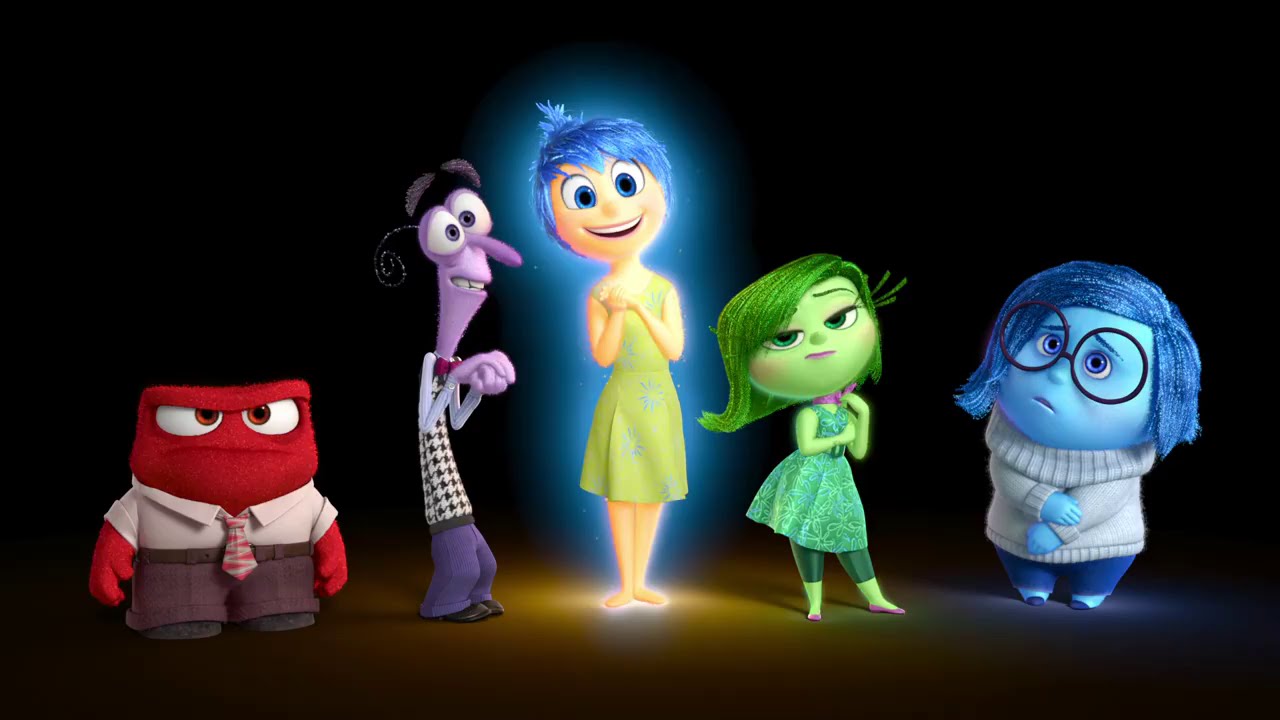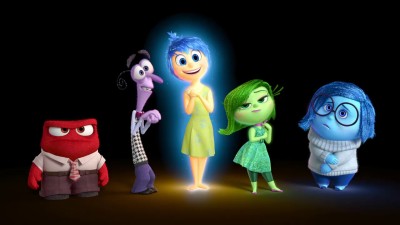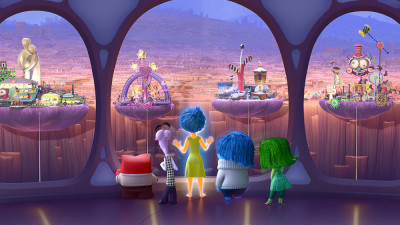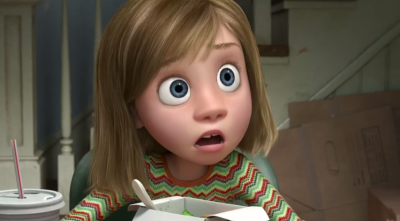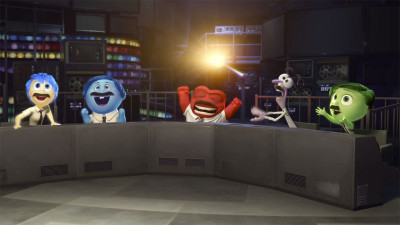Inside Out Review.
Inside Out Review
Inside Out is Pixar’s latest outing, and by far one of the most conceptually amazing movies the studios has ever done. The premise, that we’re being controlled by 5 core emotions, is one that will likely change the way we view each other when we’re being emotional; the way that Toy Story likely led to more toys being placed neatly on shelves rather than tossed under the bed, or that clown fish sales jumped sharply after Finding Nemo came out.
Pixar had a recent string of good movies that were enjoyable but lost in the pop culture lexicon. While a number of kids were seen with toy bows and arrows after Brave’s release this could also have been at least partly contributed by the Hunger Games franchise, and there hasn’t been a lot of post-movie buzz around Monster’s University or the nearly-awful Cars 2. Because of that you’ll see that a lot of reviewers and posts declaring Inside Out to be the best Pixar outing since 2010’s Toy Story 3, and the truth is they’re not wrong. A return to form was inevitable with Pixar, but it’s still welcome, and it feels like being reunited with a best friend.
The main character, well the main character in the human world, is Riley. She is an 11 year old girl torn from her home, her friends and her hobby suddenly, setting up quite the emotional week. The main characters inside her head are Joy and Sadness, the two first emotions that Riley ever felt, and they are joined by Fear, Disgust and Anger; each playing a role in helping control Riley. When she needs to be afraid of danger, Fear takes over, or when someone tries to feed her broccoli it’s Disgust’s turn.. you get the idea. However, right away we see that Sadness is sort of left in the dark on her own, and that she is unwanted by Joy (understandably) but serves a needed purpose. The plot revolves around Sadness and Joy leaving “headquaters” and being lost in the depths of Riley’s mind – leaving only Anger, Fear and Disgust at the helm.
Inside Out is a movie that works on many levels, it’s easy to see how it had the #1 non sequel/remake opening weekend – kids and adults want to see Pixar’s movies. Since Toy Story’s release in 1995 nearly an entire generation has grown up with Pixar and now starting to have their own kids, offering a sort of nostalgia among moviegoers as they remember being taken to see a Pixar movie when they were children, and this movie is a perfect example. Bright colorful animation is pleasing and done so well we’re NOT talking about it; gone are the days where we talk of Sulley’s hairs being generated perfectly, we’ve grown to expect animation perfection from Pixar and this movie is no exception. For those paying attention to those details though, they will not be disappointed, and the use of color in this movie is important, symbolic, and done perfectly. For example, each memory is color coded to it’s main emotion that was happening to Riley and when memories or entire islands of personality are unused or forgotten they lose saturation and turn to dust to be forgotten.
Adults should expect themselves to be checking out the topography of the world created. Headquarters is centrally located but surrounding that is a pit of emptiness, and further out are stacks and stacks of memories that are in rows vaguely resembling a human brain. It’s that subtle use of symbolism that allows this movie to soar. Eventually they meet other workers in Riley’s brain, cleaners that move old memories out to allow new ones to come in, and Bing Bong, an imaginary friend from Riley’s youth that is all but forgotten. He joins the duo as they try to make their way back home, and along the way visit several places that are perfectly symbolized in Riley’s brain. Subconscious is a deep pit, Imagination Land is filled with actors in a brilliant but brief metaphor on action, and even the devolving Abstract Thought are all rendered perfectly. While they might serve as cute sight gags for children, adults will be finding themselves wishing they could pause and look around in these areas, to find out what else lurks there, or the story of the workers that run Riley’s literal Train of Thought, and discover more about themselves in the process.
That’s where Inside Out really stands out, as it shows us Riley’s story it’s easy to see a mirror image of ourselves. There are subtle differences between Riley’s emotions and her parent’s that make this thought process more powerful than expected; for example her mother’s Emotional cast are completely female and her father’s male, while Riley’s are not. Is that because Riley herself is still developing her personality? Her father’s controlling emotion was a version of Riley’s Anger and her mother’s mind was being controlled by a version of Sadness; is there a reason for that? It’s a lot to ponder, and almost distractingly so as the plot itself really doesn’t place Riley or any of the emotions in any real danger. You know 3/4th’s of the way through the film the relative safeness of these characters and it takes something small away from Riley’s story.
There is the one sticking point in Inside Out, as you never get a clear sense of conflict. To the movie’s credit the story cleverly and deftly takes it’s watchers throughout each of the emotions represented by the voices in her head. The only exception to this might be Fear, while represented well to Riley through nightmares and other dangers of being a preteen in a new city, we never sense that emotion as moviegoers the way we do the others. Of course, this could be intentional as the movie is made for all ages, but it does feel like a misstep, even if it’s a minor one. The movie is lacking a traditional “badguy”, not even a surprise one like “Wreck or Ralph” or “Big Hero 6” and because of that, you never truly fear that Riley (or Joy or Sadness) won’t be OK in the end. That doesn’t mean their aren’t some plot roller coasters along the way, but none hit as hard or with the emotional depth of Pixar’s “Up” or “Toy Story” franchise.
Still, that would be like comparing one slice of pizza to another; even if it’s not your favorite it’s still pretty darn good, and that’s all we can ask from Pixar. When a movie is so close to perfection as this it’s hard to even attempt comparison, but it’s so good it sort of begs for it. Where it will land among the greatest Pixar has to offer will have to be decided with time, but the very fact that we’re even asking this question means that Disney has a hit on their hands. No one asked if Cars 2 is as good as Up. (Oh and for Disney fans there are a few cute Easter Eggs; listen for the Haunted Mansion one, as it’s my favorite). There are many jokes that were meant for adult audiences, (the San Francisco Bear was a perfect one), while the children intended slapstick moments never got to the point of eye rolling, setting up a nearly perfect family movie that can also serve as a nice ice-breaker for talking to children about their emotions; and for that it can be commended as one of Pixar’s best. The end of the movie has another brief moment of depth, as we see Riley’s memories sharing emotions, a sign of growing up perhaps. It’s gone before we can really decide and then we’re given the funniest Pixar moment in a while as we briefly get inside other side-character’s heads, including a dog and a cat, to see how their emotions control them. When the movie finishes you’ll wish it hadn’t as there is so much still to be explored, and that’s always a sign of a great night at the movies.
4 stars out of 5.


